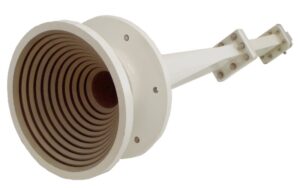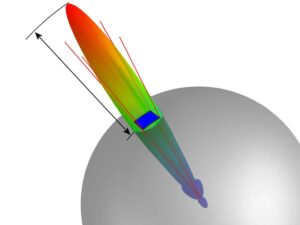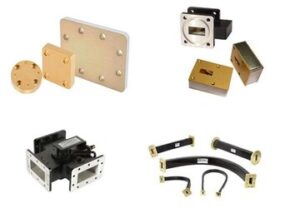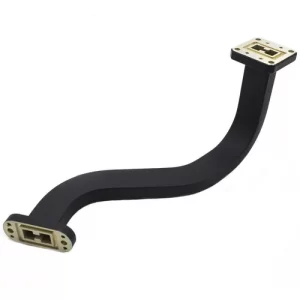Table of Contents
Signal distribution
One of the main functions of the waveguide coupler is signal distribution. As an efficient transmission medium, the waveguide can achieve low loss signal transmission under high frequency conditions. Waveguide couplers can precisely distribute the power of the input signal to multiple outputs, which is essential for the stable operation of complex systems.
For example, at satellite ground stations, waveguide couplers can distribute a high-power signal to different antenna units. Suppose you have a 100W input signal that needs to be evenly distributed across four antenna systems, and each antenna unit will receive a 25W signal. Such signal distribution can be achieved through waveguide couplers, ensuring that each antenna receives the same amount of power and achieves consistent signal coverage.
If the traditional cable signal splitter is used for a similar operation, due to the large signal attenuation in the cable, the signal after distribution may be reduced to 20W or even lower, the efficiency of the waveguide coupler is much higher, especially in high-frequency applications, the low loss characteristics of the waveguide can increase the efficiency by more than 20%.
The cost of waveguide couplers may be slightly higher than that of cable splitters, especially for high-power applications where the material cost of waveguide couplers increases. Considering their longer life span (typically 10 years or more) and their high efficiency, the total cost of waveguide couplers is 20 to 30 percent lower than cable solutions. In the telecom base station project, the use of waveguide couplers can reduce energy loss by 15%, which is equivalent to saving about 50,000 yuan in electricity costs in one year. Standard waveguide couplers are 10 cm long and 2 cm wide, which is 40% smaller than most cable dispensers and also saves installation space.
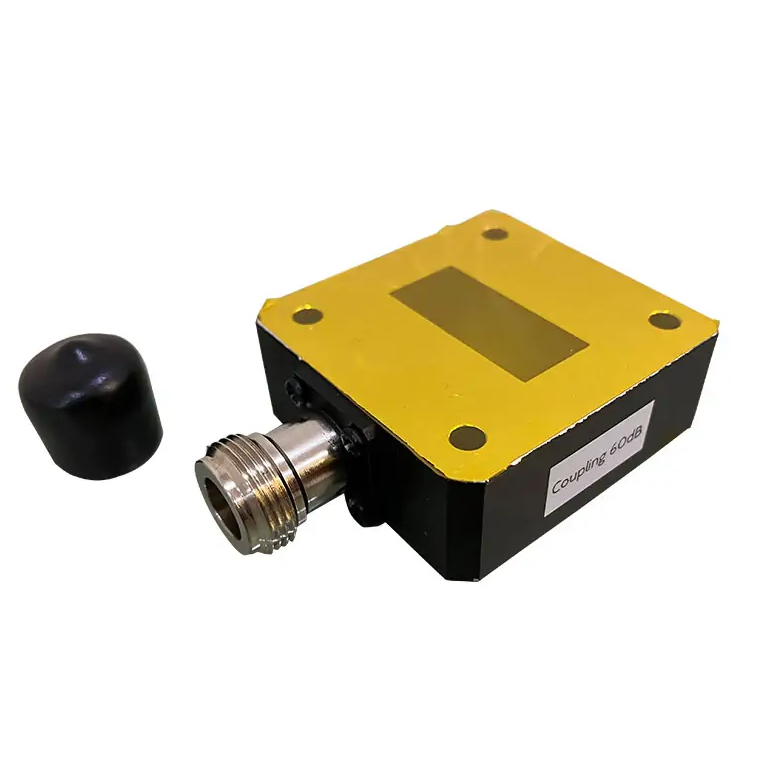
Signal combination
Another key function of waveguide couplers is signal combination, which is very useful in situations where multiple signal sources need to be brought together into a single receiver, especially in systems such as radar, satellite communications, and radio broadcasting.
For example, in a radio broadcast system, multiple transmitters may operate simultaneously, each with a power of 50W. Through the signal combination function of the waveguide coupler, the power of these transmitters can be pooled into a common antenna, so that the total output power can reach 150W or higher, thus covering a wider broadcast range and increasing the effective distance of the signal.
Using ordinary cable combiner for the same operation, due to the cable in the signal transmission process there is a certain attenuation, the signal combination efficiency is low. After each transmitter’s 50W signal passes through the cable combinator, only 40W May be effectively combined, resulting in an overall output power reduction to around 120W. The signal loss of the waveguide coupler is extremely low, and the combined efficiency is close to 98%, which means that almost all of the power of each transmitter is effectively combined, and the total output can be close to 150W.
The initial price of the waveguide coupler is slightly higher than that of the cable combinator, increasing the budget by about 20%. Taking the equipment configuration of a radio station as an example, the price of the cable combinator is $8,000, and the price of the waveguide coupler is $10,000. Taking into account the higher efficiency of the waveguide coupler and its long life (it can usually be used for more than 15 years), the long-term cost of this device is lower, saving about $5,000 per year in electricity bills.
Standard waveguide couplers are about 15 cm long and 3 cm wide, while traditional cable combiners require 30 cm of space, which is very unfavorable in scenarios where device integration is dense. Especially in space communication stations or military radar systems, equipment space is extremely valuable, and the use of small, efficient waveguide couplers can save at least 30% of equipment installation space. After the radar station switched to waveguide coupler, the signal quality of the system was increased by 15%, and the success rate of target detection was increased by 10%.
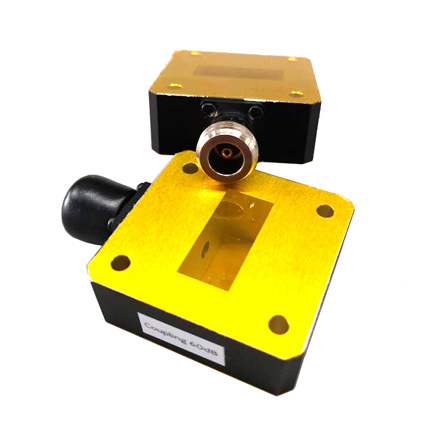
Directional coupling
The directional coupling function of the waveguide coupler can transfer the signal from one waveguide to another while avoiding the backpropagation of the signal. This ensures that the signal is transmitted only in the specified direction, thus reducing interference and signal reflection.
In satellite communication, directional couplers can effectively prevent signal backflow to the transmitting end. When a satellite ground station sends a signal with a power of 100W, if the directional coupler is not used, part of the transmitted signal may be reflected back to the transmitting end. After the use of directional couplers, more than 90% of the signal can be transmitted to the receiving end without reflection, and only less than 1W of power reflux, greatly reducing the loss of equipment and interference.
Directional couplers can provide up to 30dB of isolation compared to normal waveguide or cable systems. This means that the signal returning to the transmitting end is effectively attenuated to less than 1/1000 of the original signal, whereas in a traditional system, there may be only 10dB of isolation, and the signal attenuation is only 1/10 of the original signal.
The initial price of directional couplers is relatively high, about 1.5 times that of ordinary waveguide components, traditional waveguide devices may cost 15,000 yuan, while the price of directional couplers is 22,000 yuan. Considering that it can reduce system signal loss by 30% to 40%, and its long service life of 10 to 15 years, the overall cost performance is very high. In systems with signal transmission frequencies above 5GHz, directional couplers can improve transmission efficiency by at least 15%, saving more than $10,000 per year in electricity and maintenance costs.
Directional couplers not only improve the quality of the signal, but also play an important role in protecting the equipment. Taking high-frequency radar systems as an example, directional couplers can avoid strong signal reflection backflow and prevent damage to radar receiving equipment. For a typical radar system, the service life of the equipment can be extended by 30% after the use of directional couplers, reducing the frequency of equipment replacement and maintenance costs.
Monitoring and measurement
Through the waveguide coupler, the system can extract a small part of the signal from the main transmission signal for real-time monitoring, without having an obvious impact on the main signal. The output power of a radar transmitter is 500W, and about 1% of the signal is usually extracted using a waveguide coupler, that is, about 5W, and sent to the monitoring device for real-time detection. If a power anomaly is found during the monitoring process, such as below 480W or above 520W, technicians can make immediate adjustments to prevent equipment overload or power insufficiency from affecting the radar’s detection ability.
Compared with traditional cable monitoring equipment, waveguide couplers hardly affect the power and quality of the main signal during monitoring. When the ordinary cable monitoring device extracts the signal, it may lose 2% to 5% of the main signal power, while the power loss when the waveguide coupler extracts the signal is usually less than 0.5%. This means that in a 500W system, the cable monitoring device may lose 10W to 25W of power, while the waveguide coupler will lose less than 2.5W, a four-fold increase in signal efficiency.
The price of the waveguide coupler used in the monitoring system is 20,000 yuan, while the traditional cable monitoring equipment only needs 10,000 yuan. Due to its high efficiency, long life (usually more than 10 years), low loss and other advantages, the waveguide coupler can significantly reduce maintenance costs and energy losses during long-term use, saving 5,000 to 8,000 yuan per year in electricity and equipment maintenance costs.
The monitoring function of the waveguide coupler can not only measure the signal power accurately, but also monitor the frequency, phase, modulation and other parameters of the signal in real time. In satellite communication systems, the coupler can extract 5MHz bandwidth of the signal for frequency monitoring, ensuring that the signal frequency is stable within a predetermined range (such as 5.8GHz ± 0.01GHz). The introduction of a waveguide coupler at a satellite ground station has improved signal monitoring accuracy by 15% and reduced communication interruptions due to frequency drift.

